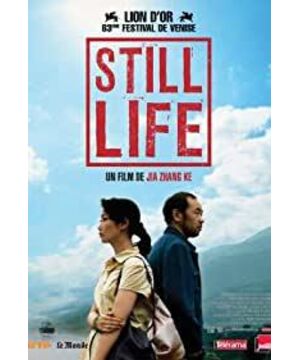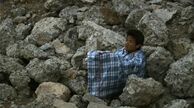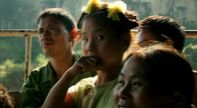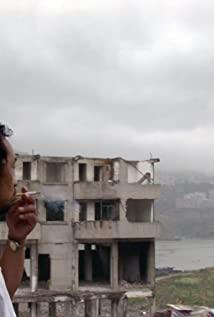Scene 2: The young pony brother who imitated Brother Mark, not only imitated Brother Mark to light cigarettes with banknotes (he was the one who tore off the newspaper), but also exaggerated the poses in the movie, and interacted with Han Sanming (that is, Director Jia). dude) exchange phone numbers. When the video was playing, I wanted to write down the 134 call to see if I could really get through. According to online reports, this number is really Han Sanming's own number, which has already been blown up by fans.
Scene 3: The little boy who sang "Rice Loves Rice" and "Two Butterflies" was so devoted and emotional, it made me feel that these two songs are so good for the first time, and once again proved that I mentioned the topic of the singing of the working people in the article "The Bravery of Prometheus and the Wrath of the Gods" a few days ago. I decided to capture these two audio clips as ringtones for my phone after the DVD came out.
Scene 4: Fengjie Immigrant Memorial Tower, I noticed the incongruity of that thing when the children ran over to play. I didn't expect Director Jia really lit it and made it fly away suddenly. In addition to being surprised, I also speculated on the meaning, which may be imposed. One is Director Jia's attitude towards the demolition of the Three Gorges. In fact, the film is not too absolute, but it is indeed negative; the other is the successful launch of Shenzhou-6, which means that this high-end technology has and contributed to the actual life of the people. Woolen cloth? The third is the mood of the heroine at that time, she made up her mind and flew away. This is my understanding.
Scene 5: "Cut off the clouds and rain in Wushan, and the moat becomes a thoroughfare." The bridge lighting is really vivid.
Scene 6: The bald-headed vocalist who is somewhat similar to Zero Point in the small theater roared "Dried Wine If You Can't Sell It". No matter if it is the end of the world, I still want to be happy.
Scene 7: After the old man of the hotel was demolished, he was forced to move to the cave of an equally precarious stone arch bridge. I'm all too familiar with this scene... The vision of Sanming's departure is very moving.
Scene 8: After the couple decided to get divorced, they danced on the ground where the rocks were pierced by the waves
. he. It is said that in the original script, Sanming explained that his mine had collapsed and he was buried, so he almost couldn't get out. After escaping from death, he felt that she was important to him, so he came. But the final treatment of the film is just silently lighting a cigarette, Niu B...
Scene 10: Zhao Tao returns to Jiangling in one day. From the beginning to the end, until she holds her mineral water bottle, the water in it is always only one tenth. The general living conditions of the Chinese people.
Scene 11: Brother Xiao Ma goes and never returns. San Mingkong is facing a banquet table. The opposite is estimated to be the three brothers Liu Guan and Zhang who have not removed their makeup after the performance. This setting is not only in line with the background of the Three Kingdoms in Baidicheng, but also implies that this kind of buddy is unworthy...
Shot 12: Sanming decides to redeem his wife, so he plans to go back to Shanxi to dig coal and meet his buddy before leaving. Drinking and smoking are strong, long shots are very touching.
Scene 13: Finally, Sanming and his brothers packed up and went to Shanxi together. Looking back, he saw a man with a bamboo pole and stepping on a steel wire suddenly appeared in the middle of the desolate house. I think this last stroke reveals the theme of the film: life is like walking on a tightrope (in fact, we usually call this walking on thin ice), you may fall at any time, but you have to keep moving forward, no Sadly and joyfully walked forward. This is the Chinese character.
Therefore, I think "The Three Gorges Good Man" is a criticism of the gains and losses of the Three Gorges Water Conservancy Project, rather than a demonstration of the tenacious vitality and indomitable character of the Chinese people. I don't know if Jia Zhangke got inspiration from Yu Hua's "To Live" (note that it is Yu Hua's "To Live", not Zhang Yimou's "To Live"), I know that the theme of showing Chinese vitality only needs to restore the truth of life itself. However, there is no need to advocate revolutionary optimism, and there is no need to exaggerate the so-called sadness.
View more about Still Life reviews









